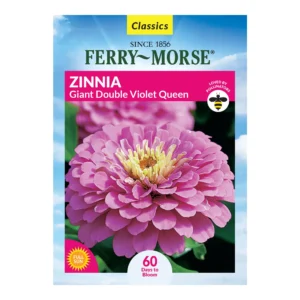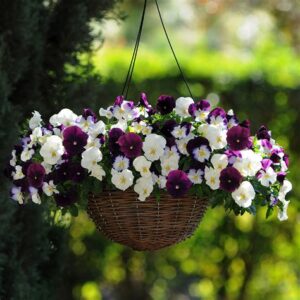Zinnia, Pinwheel Mix
1,500 د.ك
-
Mildew resistant zinnias!A Burpee breeding breakthrough; mildew resistant zinnias! Grow this carefree beauty even where summers are humid. Compact bushy plants topped with a profusion of 3 1/2″, single, daisy-like blooms all summer long. Good in borders and containers. The more you cut, the more they bloom! Heat-loving and very easy to grow.How to Sow and Plant
Zinnia may be grown from seed sown early indoors and transplanted outside , or sown directly in the garden in grow season , or from potted plants.
Sowing Seed Indoors:- Sow indoors 5-7 weeks before outdoor planting using a seed starting kit
- Sow seeds ¼ inch deep in seed starting formula
- Keep the soil moist at 70-75 degrees F
- Seedlings emerge in 7-10 days
- As soon as seedlings emerge, provide plenty of light on a sunny windowsill or grow seedlings 3-4 inches beneath fluorescent plant lights turned on 16 hours per day, off for 8 hours at night. Raise the lights as the plants grow taller. Incandescent bulbs will not work for this process because they will get too hot. Most plants require a dark period to grow, do not leave lights on for 24 hours.
- Thin to one seedling per cell when they have two sets of leaves.
- Seedlings do not need much fertilizer, feed when they are 3-4 weeks old using a starter solution (half strength of a complete indoor houseplant food) according to manufacturer’s directions.
- Transplant hardened-off seedlings to the garden after the frost.
- Before planting in the garden, seedling plants need to be “hardened off”. Accustom young plants to outdoor conditions by moving them to a sheltered place outside for a week. Be sure to protect them from wind and hot sun at first. If frost threatens at night, cover or bring containers indoors, then take them out again in the morning. This hardening off process toughens the plant’s cell structure and reduces transplant shock and scalding.
-
Tips
- Plant zinnias in mixed plantings with other summer-blooming annuals, or place small groups of zinnias among perennials. They are at home in cottage and children’s gardens, and they are often grown in cutting gardens.
- Shorter zinnia varieties are ideal for containers. Take care not to overcrowd them or the flowers may be significantly smaller than they should be and the plants may be taller. Always use a commercial potting mix, do not use garden soil, and make sure the containers have adequate drainage. Container grown plants will require extra water and fertilizer, look for signs of wilt or a nutrient deficiency.
- Cut stems before the flower is open for cut flowers.
- Zinnias attract hummingbirds, butterflies and beneficial insects.
غير متوفر في المخزون












